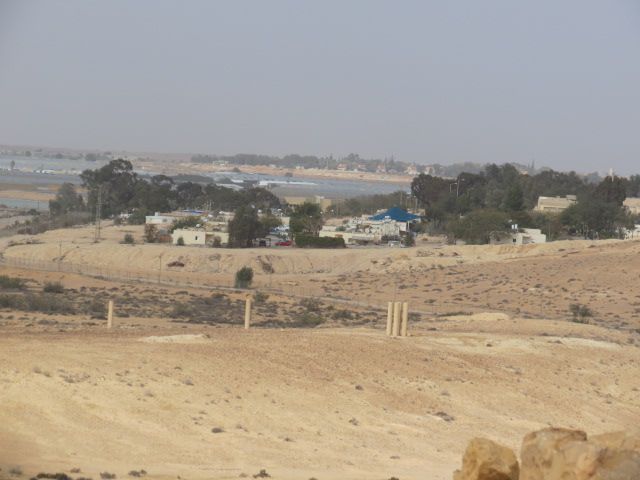A Tombstone Inscribed in Ancient Greek Is Found in Southern Israel
The Byzantine-era stone reads ‘blessed Maria, who lived an immaculate life’
/https://tf-cmsv2-smithsonianmag-media.s3.amazonaws.com/filer/63/5c/635cb807-3c03-4194-8e5c-ae572dae275b/iaa_nitzanastone.jpg)
Workers cleaning Israel’s Nitzana National Park as part of a conservation jobs program for the unemployed recently discovered a tombstone inscribed in ancient Greek dating to the late sixth or early seventh century. Almog Ben Zikri reports for Haaretz that the stone’s inscription reads “Blessed Maria, who lived an immaculate life.”
Researchers consider Nitzana, a site in the Negev desert close to the Egyptian border, important for the study of the transition from the Byzantine to Early Islamic periods.
“During the fifth and sixth centuries CE, Nitzana served as a center for the villages and settlements in the vicinity,” Tali Erickson-Gini, an archaeologist with the Israel Antiquities Authority (IAA), says in a statement. “Among other things, it had a military fortress as well as churches, a monastery and a roadside inn that served Christian pilgrims traveling to Santa Katarina, which believers regarded as the site of Mount Sinai.”
Erikson-Gini says Nitzana was founded in the third century B.C. as a station on a major Nabataean trade route. The Nabateans lived in the area between Syria and Arabia at that time, benefiting from the caravan trade between Arabia and the Mediterranean coast. The kingdom grew for centuries and eventually became an ally to the Roman Empire. Nitzana continued to be inhabited at various times until the 10th century, when it was abandoned.
In the 1930s, archaeologists discovered a trove of sixth- and seventh-century Greek and Arabic papyrus documents at the site, which is also known as “Nessana.” The documents include military, church and family records, as well as information about the caravan industry.

Researchers have since found a number of Christian tombstones outside Nitzana, but they are trying to learn more about the history of the area. Ariel David reported for Haaretz in July that archaeologists believe Nitzana was part of a thriving regional wine industry in the fifth century, when it was part of the Byzantine Empire. However, a plague pandemic and a volcanic winter in the middle of the sixth century may have devastated the area’s Christian communities. Islamic forces then took over the area in the seventh century.
“Unlike other ancient towns in the Negev, very little is known about the burial grounds around Nitzana,” Israel Antiquities Authority Southern District archaeologist Pablo Betzer says in the statement. “The find of any inscription such as this may improve our definition of the cemeteries’ boundaries, thus helping to reconstruct the boundaries of the settlement itself, which have not yet been ascertained.”
Today, Nitzana is home to an educational “eco-village” that offers ecology and cultural exchange programs for young people both inside and outside Israel, as Patricia Golan reported for the Jerusalem Post in 2017. It is home to 300 full-time students, as well as some staff and families, and hosts about 17,000 young people in various programs each year.
According to the IAA, the new discovery was made during an effort to clean the park and build nature trails that is part of Project 500, which has been hiring people who lost jobs in the pandemic. A worker assigned to the Israel Parks and Nature Authority found the stone and left it at a path head. David Palmach, director of the Nitzana Educational Village, discovered the inscription, which archaeologist Leah Di Segni of the Hebrew University in Jerusalem was able to translate.
/https://tf-cmsv2-smithsonianmag-media.s3.amazonaws.com/accounts/headshot/Livia_lg_thumbnail.png)
/https://tf-cmsv2-smithsonianmag-media.s3.amazonaws.com/accounts/headshot/Livia_lg_thumbnail.png)